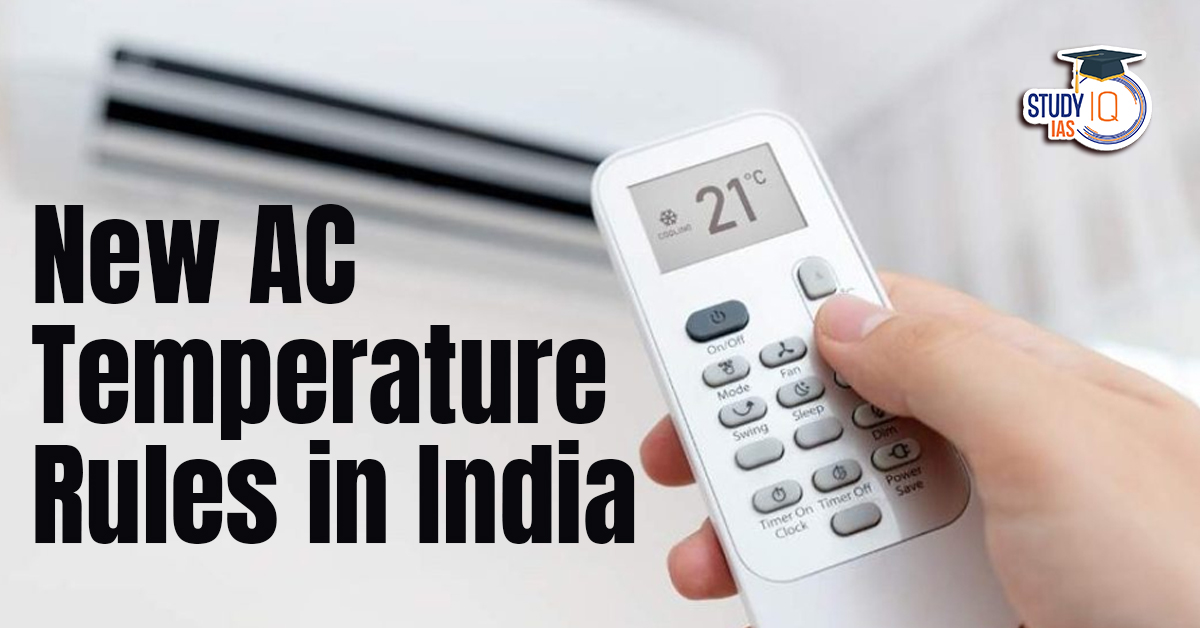Table of Contents
With scorching heatwaves gripping the nation and energy demands reaching record highs, the Indian government has introduced a New AC Temperature Rule in India 2025, aiming to standardize air conditioning usage across the country. Union Minister Manohar Lal Khattar recently announced that air conditioners in India will soon be restricted to operate between 20°C and 28°C.
This regulation marks a significant step toward reducing electricity consumption, managing the national power load, and aligning with climate-friendly energy use practices.
What Is the New AC Temperature Rule?
The new rule will limit the operational range of air conditioners as follows:
-
Minimum cooling temperature: 20°C
-
Maximum heating temperature: 28°C
Currently, many AC units in India allow cooling as low as 16°C and heating up to 30°C. However, once this provision comes into effect, users will no longer be able to set their ACs below 20°C or above 28°C.
Why Is the Government Introducing This Rule?
The decision stems from several critical challenges faced by India today, including:
1. Excessive Electricity Consumption
-
Air conditioners alone contribute to about 50 gigawatts of electricity demand — around 20% of India’s total energy use.
-
Lower cooling temperatures, like 16°C or 18°C, drastically increase power usage.
2. Peak Load Management
-
During summer, AC usage peaks, often resulting in grid stress and power outages.
-
By standardizing AC settings, India can flatten peak energy demand curves.
3. Energy Efficiency Gains
-
According to the Bureau of Energy Efficiency (BEE):
-
Every 1°C increase in AC temperature can save up to 6% electricity.
-
Setting ACs at 24°C instead of 20°C could reduce energy usage by up to 24%.
-
4. Environmental Sustainability
-
A study by the University of California, Berkeley predicts that this rule could help India:
-
Save 60 gigawatts of electricity by 2035
-
Avoid ₹7.5 lakh crore ($88 billion) in future power infrastructure investment
-
Where Will the Rule Apply?
The rule is expected to apply across:
-
Residential homes
-
Commercial buildings
-
Offices and retail outlets
-
Automobile air conditioning systems (in line with BEE comfort standards)
What Is the Recommended AC Temperature?
While the new rule sets boundaries, 24°C remains the government-recommended “ideal comfort setting” for most indoor environments. The 2020 BEE mandate recommends:
-
Homes and cars: 24°C
-
Commercial spaces: 24°C to 25°C
Global Comparison: How India Compares
| Country | Minimum Cooling | Maximum Heating | Enforcement Status |
|---|---|---|---|
| India (2025) | 20°C | 28°C | To be implemented soon |
| Japan | 28°C | – | Advisory in government offices |
| Spain | 27°C | 19°C | Mandatory for public/commercial |
| China | 26°C | – | Mandated in offices and schools |
| USA | 25.5°C (78°F) | – | Suggested by Department of Energy |
India’s move is aligned with global efforts to promote sustainable air conditioning practices, balancing comfort, energy use, and environmental health.
Pros and Cons of the New Rule
Benefits:
-
Lower electricity bills
-
Improved energy efficiency
-
Less carbon emissions
-
Reduced grid stress and fewer outages
-
Better thermal comfort without health risks from overcooling
Challenges:
-
Users in extremely hot and humid regions may initially find 20°C less cooling than preferred
-
Older AC units may need upgrades or software updates to comply
How Will the Rule Be Enforced?
The government has stated that it will monitor compliance, though exact enforcement mechanisms (like manufacturing mandates or in-home monitoring) are yet to be detailed.
It is expected that:
-
New AC models will be manufactured with preset limits
-
Star-rated ACs may have updated firmware in line with BEE guidelines
-
Public buildings may be prioritized for early implementation


 National Project for Strengthening Disas...
National Project for Strengthening Disas...
 CAG Report on Pradhan Mantri Kaushal Vik...
CAG Report on Pradhan Mantri Kaushal Vik...
 NITI Aayog Report on Public R&D Inst...
NITI Aayog Report on Public R&D Inst...

























